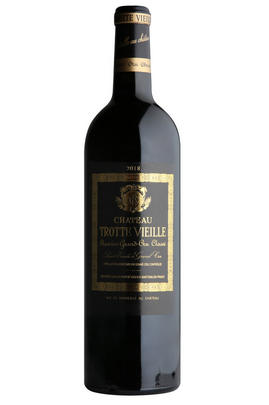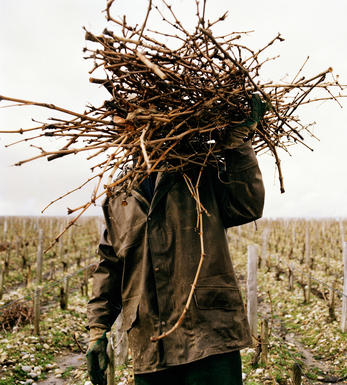
2016 Château Trotte Vieille, St Emilion, Bordeaux

Critics reviews
The 2016 Trotte Vieille is blessed with a finely tuned bouquet of brambly red berry fruit, orange pith and light rose petal scents that unfurl with aeration. The medium-bodied palate delivers supple tannins and a fine bead of acidity. Fresh and pliant, with a gorgeous, silky finish that feels very persistent. This is an utterly charming and noble Saint-Émilion. Tasted blind at the annual Southwold tasting.
Drink to 2045
Neal Martin, Vinous.com (January 2020)
The 2016 Trotte Vieille has a deep garnet color. It strolls out with vivacious notes of black cherries and stewed black plums, followed by hints of licorice, crushed rocks, and garrigue. Medium to full-bodied, the palate is bright and refreshing, delivering plush tannins to the layers of pure black fruits, finishing on a mineral note.
Drink 2024-2044
Lisa Perrotti-Brown MW, 2016 Retrospective, The Wine Independent (December 2022)
The 2016 Trottevieille is a blend of 45% Merlot, 2% Cabernet Sauvignon and 53% Cabernet Franc picked on 6 October for the Merlot and 18 October for the Cabernets, one of the latest in recent years. The yield was 37 hectoliters per hectare, and it is matured entirely in new oak. The bouquet is quite intense, although personally I would have employed less new oak. However, it does open up nicely in the glass and imparts nuances such as orange blossom and incense aromas with time. The palate is medium-bodied with fine tannin, well judged acidity, and here I feel the oak is simpatico with the fruit. It has a lovely grainy texture, great depth and maintains precision all the way through to the finish. This is a strong follow-up to the 2015 Trottevieille although it will require several years in bottle to subsume the oak.
Neal Martin, The Wine Advocate #230 (April 2017)
Dark crimson. Quite appetising on the nose. Well judged. Not dramatic and verging on stringy but at least it's not OTT. If it could just move to being very slightly riper phenolically it would be a lovely wine. Drying finish.
Drink 2024-2038
Jancis Robinson MW, JancisRobinson.com (April 2017)
Complex aromas of blackberries, dried flowers and other dark fruit. Shows hints of cedar and blackberries. Full-bodied, dense and wonderfully integrated with rich tannins that just melt into the wine. Extremely fine and focused finish. Shows harmony and balance. Better after 2024.
James Suckling, JamesSuckling.com (January 2019)
___
The polish and intensity to this are really impressive with such finesse and balance. Full-bodied yet tight and gorgeous. Tight and reserved. Such ethereal beauty. Finish goes on for minutes.
97-98/100 - James Suckling, JamesSuckling.com (April 2017)
From a great terroir on the upper plateau (not far from Troplong Mondot) and very old vines, the 2016 Château Trotte Vieille is a classic Saint-Emilion that has juicy dark fruits, leafy herbs, forest floor, and underbrush aromas and flavors. Medium-bodied, pretty, elegant, and finesse-driven, it has fine tannins and a balanced style that’s going to evolve nicely for 15+ years or more.
Drink to 2034
Jeb Dunnuck, JebDunnuck.com (February 2019)
About this WINE

Chateau Trotte Vieille
A 1er Grand Cru Classé (B) St. Emilion château which has been owned by the négociant house Borie-Manoux since 1949. The company also owns Château Batailley in Pauillac and Château Beau Site in St-Estèphe and is now run by Philippe Castéja. Trotte Vieille (the trotting old lady) refers to the legend of an old woman who lived here in the 18th century and spent her time trotting around in search of local gossip.
The property is located on a plateau east of St-Emilion and the 10-hectare walled vineyard is planted with Merlot (50%), Cabernet Franc (45%) and Cabernet Sauvignon (5%). The grapes are hand-harvested and then fermented in small, temperature-controlled concrete vats. The wine is matured in oak barriques (80% new) for 18 months. It is bottled unfiltered.

St Émilion
St Émilion is one of Bordeaux's largest producing appellations, producing more wine than Listrac, Moulis, St Estèphe, Pauillac, St Julien and Margaux put together. St Emilion has been producing wine for longer than the Médoc but its lack of accessibility to Bordeaux's port and market-restricted exports to mainland Europe meant the region initially did not enjoy the commercial success that funded the great châteaux of the Left Bank.
St Émilion itself is the prettiest of Bordeaux's wine towns, perched on top of the steep limestone slopes upon which many of the region's finest vineyards are situated. However, more than half of the appellation's vineyards lie on the plain between the town and the Dordogne River on sandy, alluvial soils with a sprinkling of gravel.
Further diversity is added by a small, complex gravel bed to the north-east of the region on the border with Pomerol. Atypically for St Émilion, this allows Cabernet Franc and, to a lesser extent, Cabernet Sauvignon to prosper and defines the personality of the great wines such as Ch. Cheval Blanc.
In the early 1990s there was an explosion of experimentation and evolution, leading to the rise of the garagistes, producers of deeply-concentrated wines made in very small quantities and offered at high prices. The appellation is also surrounded by four satellite appellations, Montagne, Lussac, Puisseguin and St. Georges, which enjoy a family similarity but not the complexity of the best wines.
St Émilion was first officially classified in 1954, and is the most meritocratic classification system in Bordeaux, as it is regularly amended. The most recent revision of the classification was in 2012

Cabernet Sauvignon Blend
Cabernet Sauvignon lends itself particularly well in blends with Merlot. This is actually the archetypal Bordeaux blend, though in different proportions in the sub-regions and sometimes topped up with Cabernet Franc, Malbec, and Petit Verdot.
In the Médoc and Graves the percentage of Cabernet Sauvignon in the blend can range from 95% (Mouton-Rothschild) to as low as 40%. It is particularly suited to the dry, warm, free- draining, gravel-rich soils and is responsible for the redolent cassis characteristics as well as the depth of colour, tannic structure and pronounced acidity of Médoc wines. However 100% Cabernet Sauvignon wines can be slightly hollow-tasting in the middle palate and Merlot with its generous, fleshy fruit flavours acts as a perfect foil by filling in this cavity.
In St-Emilion and Pomerol, the blends are Merlot dominated as Cabernet Sauvignon can struggle to ripen there - when it is included, it adds structure and body to the wine. Sassicaia is the most famous Bordeaux blend in Italy and has spawned many imitations, whereby the blend is now firmly established in the New World and particularly in California and Australia.


Buying options
Add to wishlist
Description
Dark ruby and purple-tinged, the wine has a pleasing nose of blackcurrant, damson red fruit, cassis and florals. On the palate, there is very good crunch, finishing with class and poise.
Blend: Cabernet Franc 53%, Merlot 45%, Cabernet Sauvignon 2%
wine at a glance
Delivery and quality guarantee